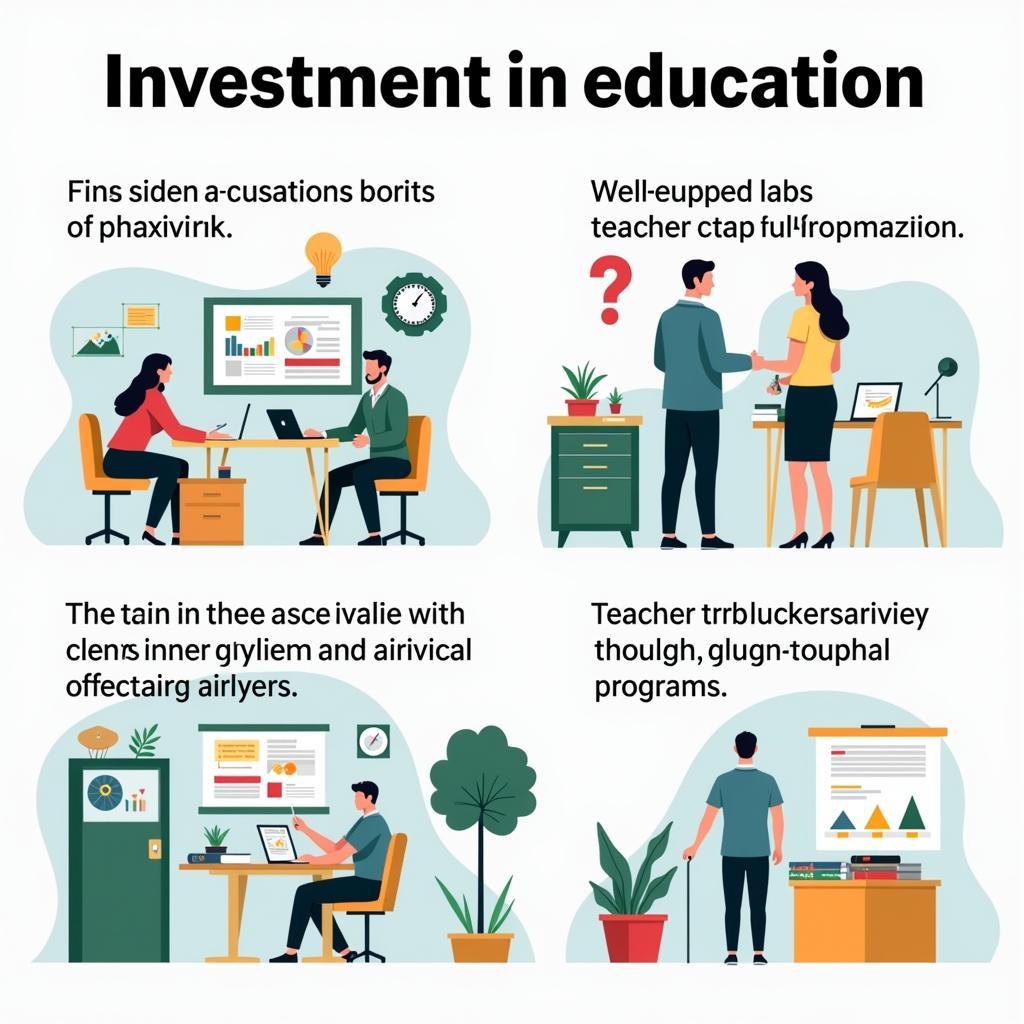Reporting on the learning outcomes of Resolution TW 7 regarding fundamental and comprehensive education and training reform, in response to the demands of industrialization and modernization under socialist-oriented market economy conditions and international integration, is a crucial task. It reflects the efforts of the entire education system in achieving the set goals.
Education Reform Under Resolution TW 7: Notable Achievements
Resolution TW 7 has laid out strategic directions for the development of education in Vietnam. Evaluating the learning outcomes of this resolution helps us clearly see the achievements made, as well as the challenges that need to be overcome. Educational reform is not a sprint, but a marathon that requires perseverance and continuous effort.
Enhancing Investment in Education: Key to Sustainable Development
One of the highlights of Resolution TW 7 is the increased investment in education. This clearly demonstrates the determination of the Party and the State to improve the quality of human resources. Investment is not only in physical infrastructure, but also in teacher training, curriculum innovation, and teaching methods.
The innovation of the general education program towards developing student competencies is a significant step forward. The new program focuses on fostering thinking skills, creativity, and problem-solving, rather than just concentrating on knowledge transmission.
Innovating Teaching Methods: From Knowledge Transfer to Competency Development
The report on the learning outcomes of Resolution TW 7 also shows positive changes in teaching methods. Teachers are encouraged to apply active teaching methods, student-centered approaches, creating conditions for students to promote proactivity and creativity in learning.
The application of information technology in education is also being accelerated, helping to improve the efficiency of teaching and learning. Online learning, the use of learning software, and digital libraries have become more common, especially in the context of the COVID-19 pandemic.
Challenges and Solutions in Implementing Resolution TW 7
Despite significant achievements, the implementation of Resolution TW 7 still faces some challenges. One of the biggest challenges is the disparity in education quality between regions. Investment in education in remote, isolated, and ethnic minority areas remains limited.
In addition, the training and professional development of teachers needs to be further emphasized. Teachers need to be fully equipped with knowledge, skills, and pedagogical expertise to meet the requirements of the new education program.
Conclusion
The report on the learning outcomes of Resolution TW 7 shows encouraging progress in Vietnam’s education sector. However, to achieve the goal of fundamental and comprehensive education and training reform, greater efforts are needed from management agencies, schools, teachers, and students.
FAQ
- When was Resolution TW 7 on education issued?
- What are the main objectives of Resolution TW 7?
- What are the key contents of Resolution TW 7?
- What is the role of teachers in implementing Resolution TW 7?
- How to improve the quality of education in remote and isolated areas?
- What are the biggest challenges in implementing Resolution TW 7?
- What solutions are proposed to overcome these challenges?
Suggested other questions, other articles on the website:
- How to innovate elementary school student assessment?
- What are the differences in the new general education program?
- What is the role of technology in modern education?
For support, please contact Phone Number: 0372999996, Email: [email protected] Or visit the address: 236 Cau Giay, Hanoi. We have a 24/7 customer care team.

